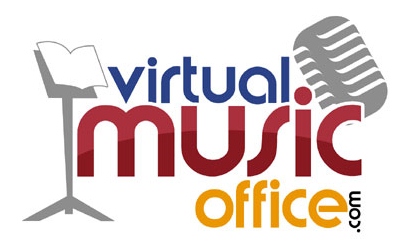 Music is Literacy. Language has its grammar and syntax, chemistry its symbols, physics its formulas, mathematics its equations; music also has its language of symbols and niche Italian terms. Music notation is a language composers use to transcribe musical thought to paper enabling readers who know the language to read, interpret and translate that language into aural art.
Music is Literacy. Language has its grammar and syntax, chemistry its symbols, physics its formulas, mathematics its equations; music also has its language of symbols and niche Italian terms. Music notation is a language composers use to transcribe musical thought to paper enabling readers who know the language to read, interpret and translate that language into aural art.
Students learn to read this specialized notation language in the same way a mathematician learns the formulas or the chemist applies the element symbols. In a piece called, “Andante” students learned the title is an Italian term indicating tempo, or speed; faster than Adagio but slower than Allegro. Many of the musical terms are, historically predominantly Italian. Musicians must understand that fortissimo is louder than forte, which means they also learn the suffix ‘issimo’. Allegretto is a “little bit” allegro. Dolce is nearly the opposite of marcato and if you get crescendo and decrescendo backwards, you can ruin the entire effect. If the music page tells you to rallentando and you accelerando instead, you crasy. If you miss a mermate or play through a caesura you’ll be embarrassed. Not only are there vocab words, but there are abbreviations for them as well; f, ff, <, >, ^. //. Foreign language.
Music study is interdisciplinary. Students studying music are also learning other subjects, like history, cinema studies, theater and foreign language.
We performed music from the movie, “The King’s Speech”, which included music by Beethoven (historic, iconic, classical), and learned some of the HISTORY of the movie, i.e. WWII, the king’s stuttering problem and the artistic effect of the music behind the speech [only in the movie] as we watched that particular movie clip. That’s history and theater.
Music is cultural. A piece called “Africa; Ceremony, Song and Ritual…” showcases 26 different drumming assignments and includes singing traditional African melodies and vocalizing tribal African sounds.
We reviewed pictures of African drums, watched/listened to video/sound clips and took class time to understand how that complex sound is really not much more than several more simple rhythms layered on top of each other, often in compound meters of simultaneous duple and triple rhythms (did you get that?). If we were to correctly perform “Andante” and “Africa” in the same concert, not a single audience participant should have trouble determining which piece is European and which is African.
To play/understand Jazz music necessitates some social studies understanding of New Orleans and how the import of slave music morphed into a style of music that the whole world understands originated in the USA. There is an academically valid reason why much of jazz, especially originally, was not written down. History again.
“Some modern educators have forgotten the call of the founder of our American school system, Horace Mann, who believed that music was essential to the education of the young for the development of aesthetic appreciation, citizenship, and thinking.”
-Alan Miller, professor of education at Fort Hays State University
Music is mathematical. When we read those markings, in addition to telling us what sound to make, they also tell us how to group them together rhythmically. It takes two sixteenths to make an eighth, two eights to make a quarter, two quarters to make a half and two half notes to equal a whole. Math.
“Music is the arithmetic of sounds as optics is the geometry of light.”
–Claude Debussy, composer
Music is emotional. Performed well, “Stars and Stripes” will evoke a significantly different response from “Taps”, or the jazz version of “Sing, Sing, Sing”. Music is used at birthdays and at funerals; to represent victory or emote defeat. It can make us cheer or cry. ….but ONLY if the musicians understand and convey the emotion in what/how they play. Psychology/Theatre!
To talk drama or choreography, we could discuss Marching Band or Show Choir.
“Music students learn about the cost of sacrifice necessary for accomplishment. They learn of the cost of loyalty and responsibility to a group. They learn of the tremendous self-discipline and cooperation required to be a member of any large and successful ensemble. They learn of pride in accomplishment and develop a self-esteem that flows over into home, work, and treatment of others.”
-Robert Wentz, superintendent of public instruction, Nevada State Department of Public Instruction
When we tune our instruments – because we know that out of tune notes together make an ugly sound – we apply a basic understanding of sound waves and frequency. We lengthen or shorten the instruments to alter pitch. Understanding vibrations, frequencies and how the length of the instrument adjusts pitch is physics.
“The word is out: Researchers have discovered a way to make kids smarter. And savvy parents are signing their children up for private piano lessons while school boards debate the role of music in the public school curriculum.”
-Joan Schmidt, Director of the National School Boards Association
———————
Thanks to Dr. David Gardner for your input.

